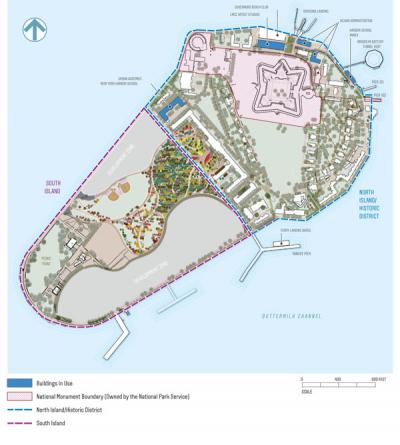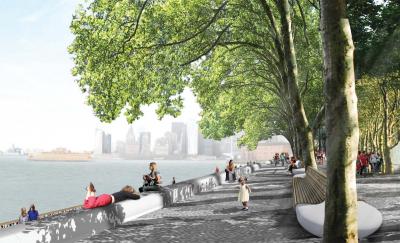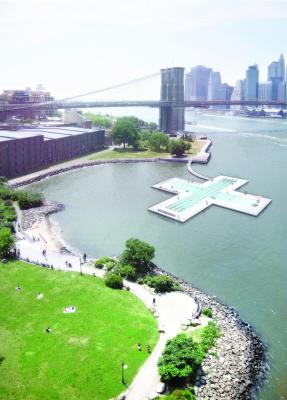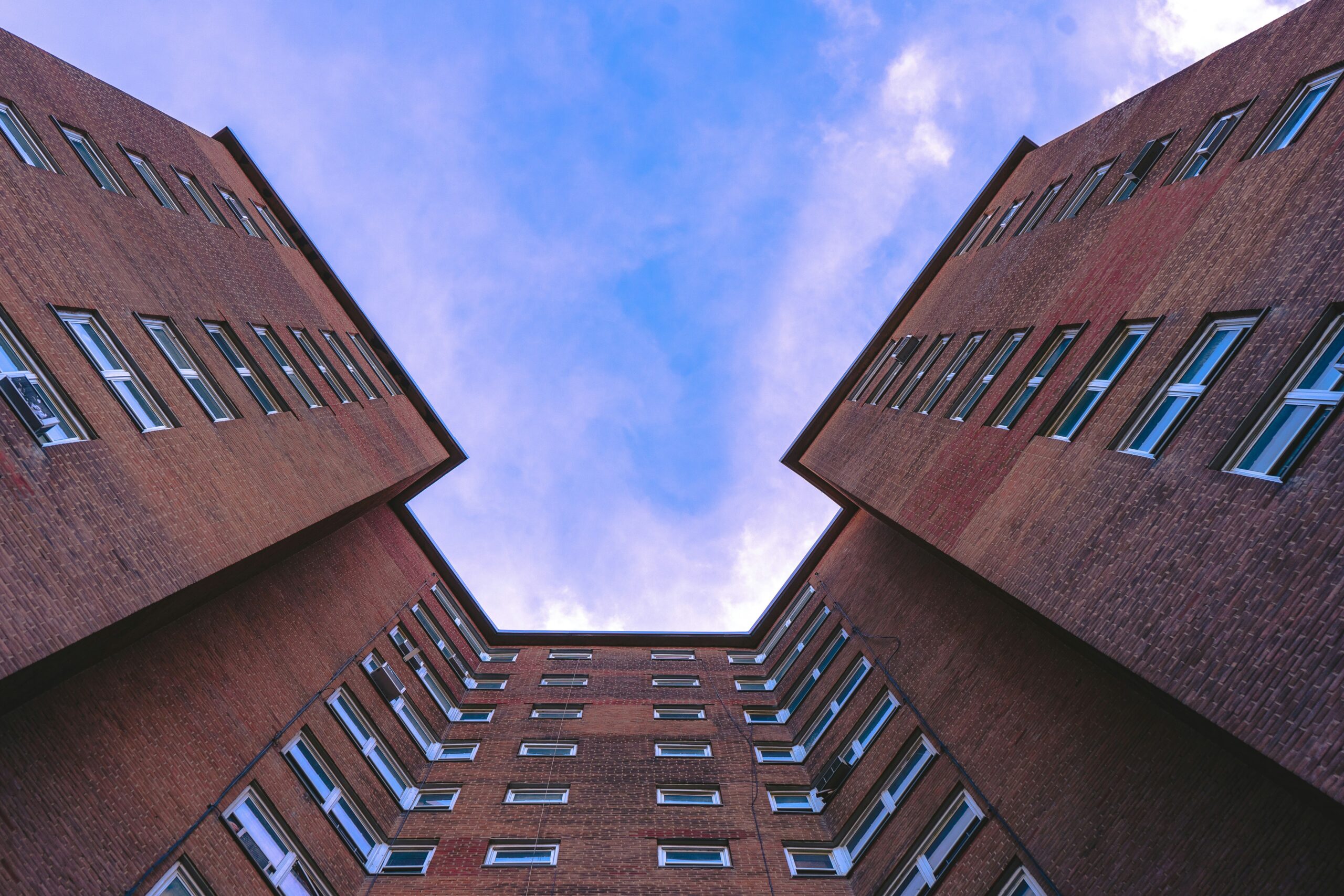In the Upper Bay of New York’s harbor, there is a new urban island under construction. Technically, this project is a work of rejuvenation or, as professionals say, adaptive re-use. A military installation since colonial times, Governors Island hosted a U.S. Army base until the mid-1960s. Then the Coast Guard took over, operating there until 1997, when the federal government deeded the island to the City and State of New York. Good timing. The subsequent fifteen years saw New York City’s most radical re-invention since the invention of the elevator.
The $260-million transformation of Governors Island is so ambitious that we can maybe talk about it, in essence, as creating an all-new island. The twenty-first century, artificial topography being created by Dutch designers West 8 juxtaposes a campus of wooden homes and brick barracks. Two historic fortresses built before the War of 1812 coexist with a new ecology of marshlands and steep landscapes designed to meet the Upper Bay’s rising sea levels in the next century. When construction completes in 2014, Governors Island will become the largest of the city’s experiments in recycling old infrastructure into public space and park amenities. These place-making projects, which expand public life in New York, stir the collective imagination and community enthusiasm for more experimentation within the city’s built environment.

Governors Island first opened to the public for summer weekends in 2003 under the control of the Trust for Governors Island, the nonprofit 501(c)3 corporation that holds title to 150 acres of the 172-acre Island. (The National Park Service has the rest, as they correspond to national monument buildings Fort Jay and Castle Williams.) The Trust established free ferry access from Lower Manhattan, and the island quietly became a special destination for cycling and picnicking. In 2007, after an international competition, the Trust selected West 8 to create the Governors Island Park and Public Space Master Plan. Their proposal, released to the public in 2010, has built a lot of anticipation. Ferry service from Brooklyn Bridge Park began. These past summers have seen big concerts and impressive international art shows. Ice cream carts came, then food trucks. Summer 2012, roughly 200 years after the fortresses were completed, saw construction begin on the park’s new landscape.
In 2010, the Trust awarded leases to the island’s first tenants. The Lower Manhattan Cultural Council operates a studio program and gallery/performance space for visual and performing artists out of Building 110. One of the several barracks buildings, Building 550, is now home to the Urban Assembly Harbor School, which held its first classes on the island in August 2011. A ferry named the Coursen is its school bus, sailing a few hundred students out to the island for school each day from the Battery Maritime Terminal in Lower Manhattan.
Early one morning this past December, I boarded the Coursen alongside those students, in their varying postures of study, argument, flirtation, harassment, malingering. My destination on Governors Island was a conference on the re-development of 40 historic buildings, none of which are addressed by the master plan. These buildings were once offices, homes, apartments, and administrative support spaces for its military tenants The Trust will issue leases for the buildings to accommodate year-round cultural, educational, and commercial activity starting in 2014. A good mix of uses is desired to advance the cultural mission and meet historic preservation requirements within Governors Island’s deed. The base rent of each lease is to be negotiated between the Trust and developers. There is an enlightened understanding that while a restaurant or conference center will contribute more in rent than a gallery space or school, the latter might have something equivalently valuable, if alternatively denominated, to contribute. All lease payments are to go toward the maintenance of the island as a free public amenity.
Walking the island that morning, I met some of the potential proposers. I heard about a bed and breakfast. There was some vision for a charter school. A pair I fell in with had found the old Officers Club: “Your day spa could take up this part of the building. Then you do your Jean Georges restaurant on the ground floor.”
To my mind, the most interesting opportunity presented by Governors Island’s existing historic buildings, especially the campus-like Nolan Park neighborhood, is an arts residency and workshop program. The Lower Manhattan Cultural Council already operates Building 110 as a studio and gallery for visual and performing artists. But there is no facility yet to support artists living and working togetheron the island for periods of time. The Nolan Park houses possess the right scale and plan to accommodate a mix of private and public life, allowing artists to retreat to work or mix communally or with the public. The character of these houses, many of them dating from the late nineteenth century, featuring generous porches and open first floors but many small rooms on their second and third floors, seemed tailored for the work of literary artists.
To go after such an opportunity, I wondered how a non-profit developer could be composed between an existing residency program, say The Corporation of Yaddo or Millay Colony, and a publishing house or even Amazon. Could the few crucial New York City magazines and literary journals be aligned to support and promote the team? The Trust for Governors Island is accepting proposals until March 14, 2013.
For a while I stood on a third floor portico in Liggett Hall, the long barracks building that will be a gateway to the new parklands West 8 has designed for the south side of the island. In the distance before me, huge dump trucks dumped and bulldozers dozed immense quantities of shining black soil, upstate landfill newly barged down the Hudson. Another question flashed to me then: Given the tremendous, energetic output from New York City’s aspiring novelists and MFA students, might there not be in existence right now a fiction manuscript that includes a future Governors Island? Is there a young writer working today who has invented a plot there or image of life there? A picnic scene. A secret meeting. A solitary walk along the windswept sea. A view back to Brooklyn.

Even more than any of our world’s other great cities, New York continuously fantasizes its transformations. We have the depictions of real upcoming developments like Hudson Yards, but also the legacy of spectacular futures past from the late Lebbeus Woods or Buckminster Fuller. But at least since the completion of the High Line Phase 1 a few years ago, though, this boundary has begun to blur. (The real estate bubble and new online culture, as well as the availability of certain software packages, have played a role in this.) Right now, for instance, there is a vision for a floating pool for the East River, first pitched to the public on Kickstarter in summer 2010, that is on track to raise its first $1,000,000 by April 2013. Like the High Line and Governors Island before it, the +Pool is voyaging from architecture fiction to urban fact, ready for swimmers in 2015.

Two notes:
1. To reach a modern sense of place requires an awareness of projects and practitioners transforming the planet foot by foot, acre by acre. This column for The Common will address actual architecture and urban conditions, like Governors Island, but I will also pursue architecture as “the literature of urban speculation,” as Geoff Manaugh calls it. If architecture is understood broadly, and if by ”architecture” we mean the environments we inhabit or might inhabit in the future, then a novel or a movie can be as architecturally significant as a building or bridge. My intention, too, is to privilege the literary dimensions of architecture, or the architectural dimensions of literature. Upcoming projects this spring will include the New York City novel after Hurricane Sandy; the stakes in contemporary architectural criticism and the emerging field of design writing; and a comparative pedagogy of the architectural studio vs the writing workshop.
2. The column’s namesake, Buckminster Fuller, is a twentieth-century American designer and author cited above, who, like The Common, was born in Massachusetts, then lived and worked in New York City between its literary and architectural communities.
Scott Geiger is the Architecture Editor for The Common. “Buckminster” is his monthly column.
Images courtesy of The Trust for Governors Island and the Family Architecture/PlayLab



